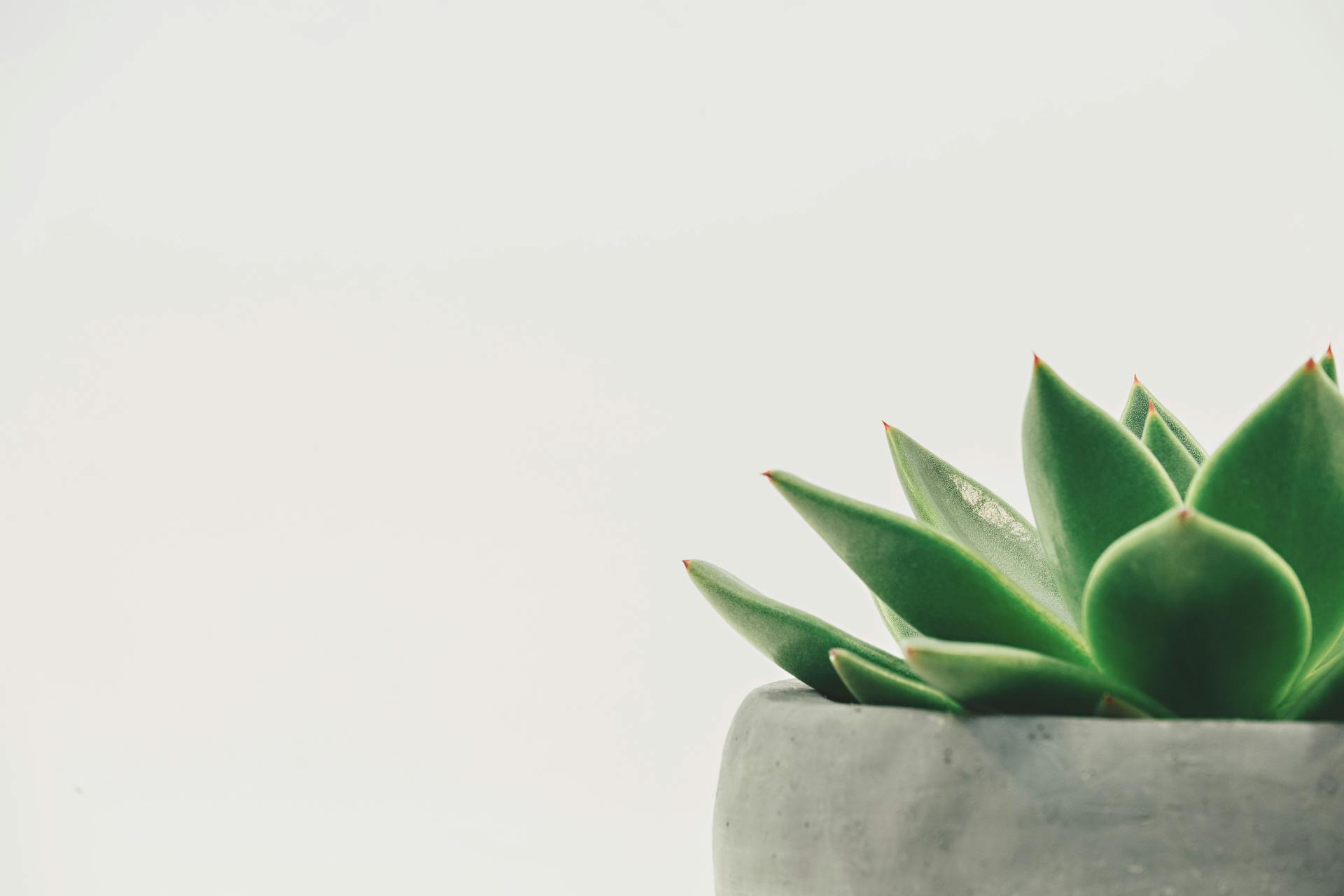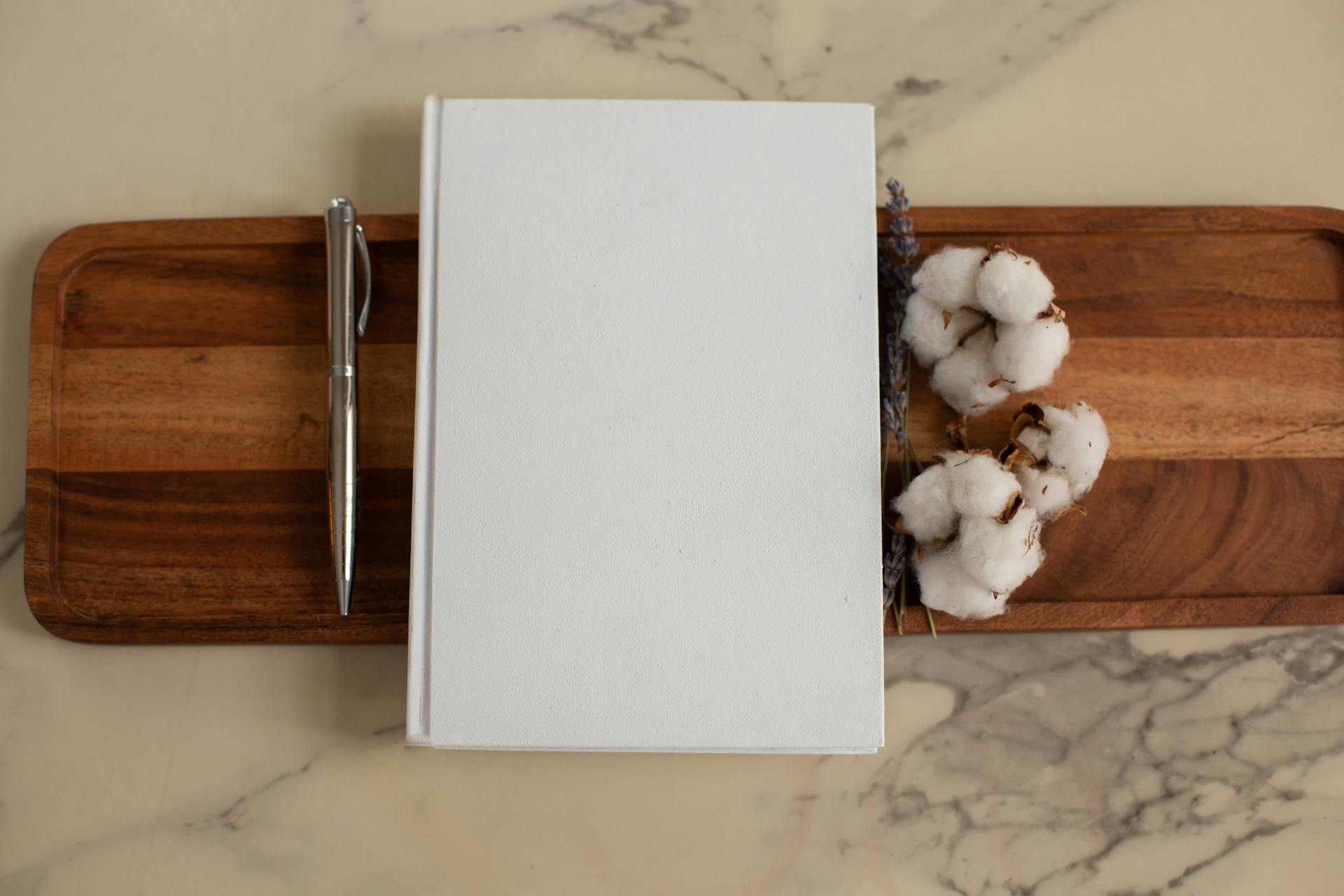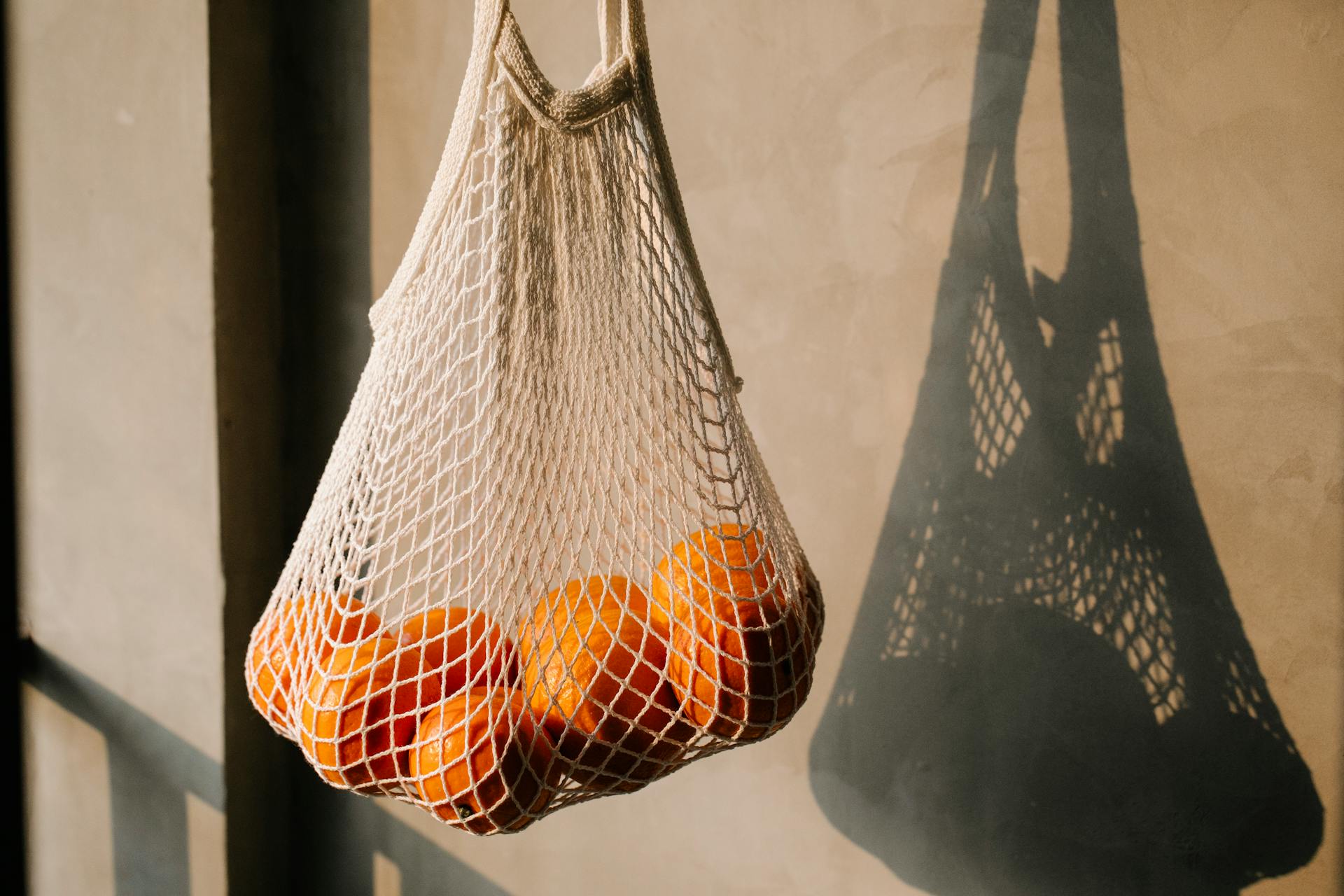
Cactus leather is the latest trend in eco-friendly fashion, and for all the right reasons. It's a plant-based alternative to traditional animal leathers that have been causing harm to animals and the environment for far too long. These days, it seems like everyone is talking about cactus leather, but what exactly is it? Is it truly sustainable, or just another marketing gimmick?
As an eco hub for sustainable brands and products, we took it upon ourselves to independently review cactus leather and its impact on the environment. We believe that transparency is key when it comes to eco-friendliness, which is why we won't be using any affiliate links in this article. We want you to know that our opinions are not influenced by any financial gain or commission. So without further ado, let's dive into the world of cactus leather!
Readers also liked: Nylon Eco Friendly Sustainable Fabric
What is cactus leather?

Cactus leather, also known as plant-based leather, is exactly what it sounds like - a type of leather derived from the paddles of the nopal cactus. Literally made from prickly pear cactus, mission cactus or Indian fig cactus that grow in abundance and form a staple of the Mexican diet, this vegan-friendly material has gained popularity as an alternative to animal-based leather.
Paddles nopales are carefully harvested and undergo a process that strips them of their tiny needles before being processed into leather. This unique material is highly breathable and partially biodegradable, making it an eco-friendly option for fashion enthusiasts. Unlike faux leather alternatives, which are often made with plastic-based materials and take up to 10 years to break down in landfills, cactus leather serves as a sustainable solution to fast fashion.
Ethical fashion brands unlike ever before have begun incorporating cactus leather into their designs, paving the way for other vegan leather alternatives. With its durability and versatility rivaling traditional animal-based leathers, it's no wonder why cactus leather is becoming a popular choice among consumers who want both style and sustainability in their wardrobe.
Cactus Leather: How Does It Affect the Environment?

Cactus leather is a new material that is gaining popularity in the fashion industry. This vegan-friendly leather alternative is made from the prickly pear cactus, which grows abundantly in certain parts of the world. Unlike traditional leather, cactus leather doesn't require a farming process or irrigation relying on water. Therefore, it has a lower environmental footprint.
Making leather from animal hides involves using harmful chemicals like chromium and formaldehyde. The production of synthetic fabrics like polyester and nylon also involves chemicals that can be harmful to both humans and the environment. Cactus leather, on the other hand, is considered non-toxic and does not require any harsh chemicals in its production. When carefully handled and sustainably produced by reputable brands with USDA organic certification or other reputable third-party certifications, cactus leather can be fully biodegradable.
While cactus leather is a great alternative to traditional leather and hand synthetic materials like bamboo viscose lyocell or modal that involve chemicals, it's important to note that not all cactus leather is created equal. Brands claiming to use sustainable materials should be carefully researched before buying their products. Reputable brands will offer transparent information about their sourcing and production practices, ensuring that their products are sustainably produced with minimal impact on the environment.
A New Way to Make Leather: Cactus-based Option?
In recent years, alternative raw materials founders have successfully managed to create products using organic materials such as mycelium cells fungi apple leather. Now, there is a new addition to the family - nopal leaves cactus. Introducing the innovative product known as cactus leather, a natural sustainable and easy-to-grow alternative to traditional leather.
Sustainable material made from opuntia cacti has been gaining popularity lately due to its potential to reduce negative impacts on the environment caused by plastic-based artificial leathers. Founded in Mexico, Desserto brings this home-grown solution to the world. The company manufactures eco-friendly products with cactus leather, helping to promote the use of related plant-based vegan leather suppliers.
Cactus leather promises a lot for those who are looking for sustainable and cruelty-free options. As an innovative way of using organic materials as an alternative for traditional animal-derived leather, it's exciting to see what other natural alternatives will emerge in the future.
Check this out: Organic Cotton
1. How is Desserto Cactus Leather Made?
Desserto cactus leather is produced using the main raw material, cactus. The fully-grown leaves of the actual plant are harvested after 6-8 months of growth in nutrient-rich soil without the use of artificial fertilizers. Nopal leaves have an inherent ability to handle extreme temperatures, making them ideal for use in creating durable and resilient leather that can withstand both high and low temperatures during cold months. The plantation lasts for 8 years, with careful attention paid to achieve desired humidity levels for optimal growth. Organic material from leftover nopal leaves is then used in a patented formulation to create Desserto, which is made using non-toxic chemicals that prevent corrosion.
Desserto products bring an organic leather alternative to the market that is partially biodegradable and made using plant-based leathers generally. An early-stage life cycle assessment conducted shows that Desserto has a significantly lower water footprint compared to animal leather and polyurethane (PU). In addition, it provides support for environmental sustainability by reducing waste from the food industry through its production process. Desserto offers a viable solution for those looking for a sustainable alternative to traditional animal leather or synthetic PU materials.
Explore further: Recycle Plant Pots
2. Is Cactus Leather Being Used Today?
Cactus leather is an innovative material that is gaining popularity in the fashion industry. This plant-based vegan leather is an alternative to traditional leather products, offering a smooth texture and sturdy performance. It can be used to make handbags, accessories, footwear, car seats, and more.
Cactus leather is a durable fabric that does not get dirty easily. It can withstand pressure put on it from any angle imaginable - even with a pocket knife! Many fashion lines have recently transitioned to using cactus leather for their vegan products. One example is a fashion brand that uses cactus-based vegan leather to make sustainable sneakers. Although the product has been constantly criticized, consumers start to consume cactus leather more and more. It seems like famous brands are also catching up with this trend as they see cactus leather as the perfect solution for a definite upgrade in the plastic leather industry, which many say sells completely greenwashed products.
Broaden your view: Regenerative Agriculture Sustainable Fashion
Cactus Leather vs Organic Cotton: What's the Distinction?

The main difference between cactus leather and organic cotton lies in their source material. While organic cotton is made from the fibers of the cotton plant, cactus leather is made from the leaves of cactus plants. This makes cactus leather a purely plant-based alternative to traditional leather, which often contains polyester or nylon in its fabric blend.
One of the significant advantages that organic cotton has over cactus leather is its established growing process. Cotton requires an estimated 10,000-20,000 liters of water to produce just 1 kg of cotton. In contrast, cactus plants require only about 200 liters of water per kg. However, cactus leather's growing process does not involve pesticides or synthetic fertilizers, making it fully biodegradable.
By adhering to organic standards and avoiding undue harm to the environment during production, both materials have the potential for significant benefits over traditional fabrics. Ultimately, whether you choose cactus leather or organic cotton will depend on your specific needs and values when it comes to sustainability and eco-friendliness.
1. CLAE
CLAÉ is a brand that focuses on offering minimalist and timeless products while keeping its environmental footprint as low as possible. The Bradley cactus sneaker is one of the classic silhouettes that CLAÉ shoes are known for, with timeless details such as color options in white and black and green sizes range. The neoprene tab detail adds to the sleek design of the shoe, making it a versatile option for any outfit.
All CLAÉ shoes are carefully handcrafted in Los Angeles, with some aspects produced by manufacturers who carry out their work in Chi Minh City, Vietnam. The brand ensures that all producers adhere to ethical manufacturing practices and minimize their impact on the environment. Even the packaging CLAÉ shoes come in is eco-friendly, made from recycled cardboard. To make sure you get the right size, CLAÉ has a handy size chart available on their website so you can order with confidence.
Get your first look at adidas’ FIFA Women’s World Cup federation kits

"Get your first look at adidas' FIFA Women's World Cup federation kits" and be amazed not only by the sleek designs but also by the sustainable materials used. Adidas has announced that they will be using cactus leather in some of their products, making them not only world cup ready but also eco-friendly. Cactus leather is a vegan alternative to traditional leather that requires less water and land to produce, making it a great choice for companies looking to reduce their environmental impact. Stay tuned for more updates on sustainable fashion choices from Adidas.
What is the difference between cactus leather and animal leather?
Unlike animal leather, cactus leather doesn't require any toxic chemicals whatsoever during its tanning process. While traditional leather production relies heavily on chemical-intensive processes, such as the use of chromium ammonium salts, which can be inhaled and increase cancer risk to those working with them or improperly disposed of causing harm to nearby communities. Cactus steers clear of these pretty unsavory practices things fetal leather requires.
Cactus leather is a bio-based leather made from the nopal cactus, which has a soft texture that's similar to animal leather but without the animal cruelty. It also has a lighter carbon footprint since it's sourced locally and doesn't require intensive agricultural practices related to raising livestock. As more people become conscious about their choices' environmental impact, cactus leather is becoming a popular material for those looking for an ethical alternative to traditional animal-based leathers.
In addition to cactus leather, other eco-friendly materials such as cupro fabric (vegan silk) are becoming more prevalent in fashion and beyond. To get the full story on sustainable fashion options, check out our related articles.
Frequently Asked Questions
Is cactus leather toxic?
No, cactus leather is not toxic as it is made from natural materials without the use of harmful chemicals or substances.
Is cactus leather durable?
Yes, cactus leather is durable and can last for many years with proper care. It has been shown to be resistant to water, scratches, and general wear and tear.
How long does cactus leather last?
Cactus leather lasts just as long as traditional leather, typically around 10-15 years with proper care and maintenance.
Is Costa Rica making vegan leather?
Yes, there are companies in Costa Rica that are producing vegan leather using sustainable and eco-friendly materials such as pineapple leaves, cork, and recycled plastics.
Can desserto replace leather?
Yes, Desserto can replace leather as it is a sustainable and eco-friendly alternative made from cactus plants. It has similar properties to leather and can be used for various products such as bags, shoes, and clothing.
Featured Images: pexels.com


